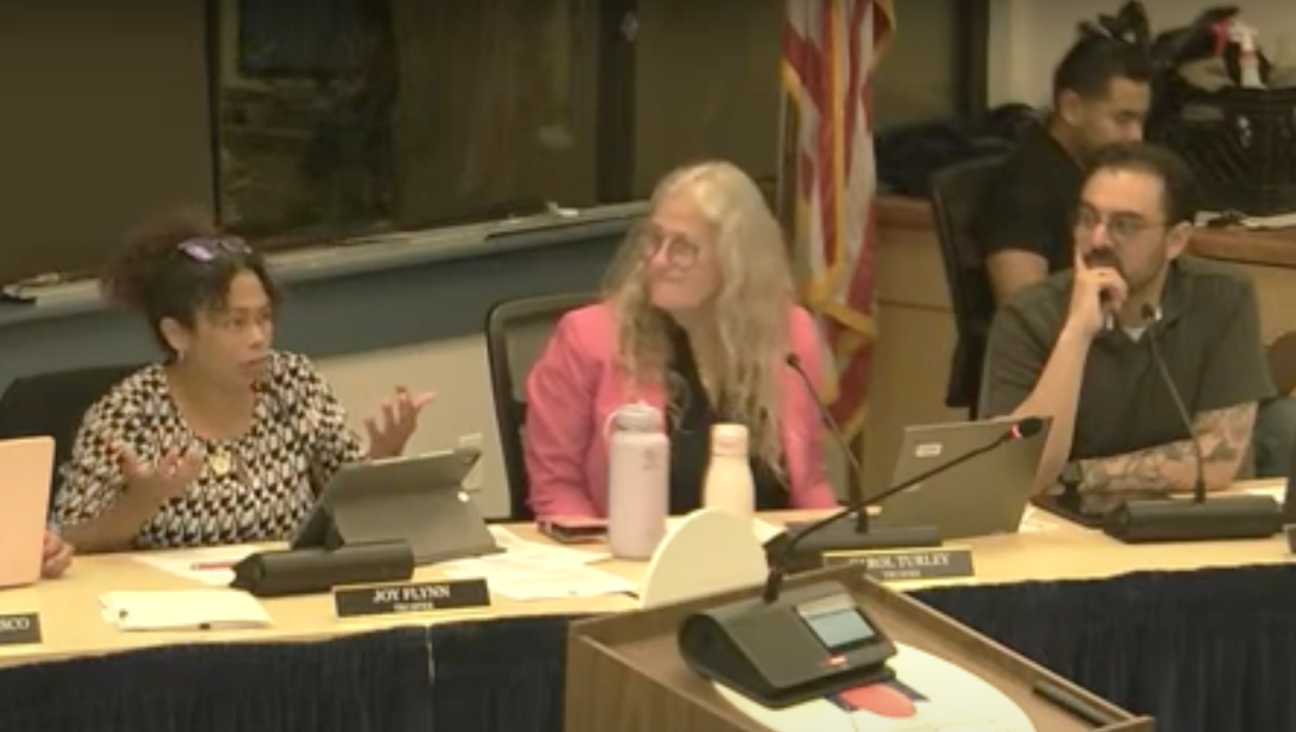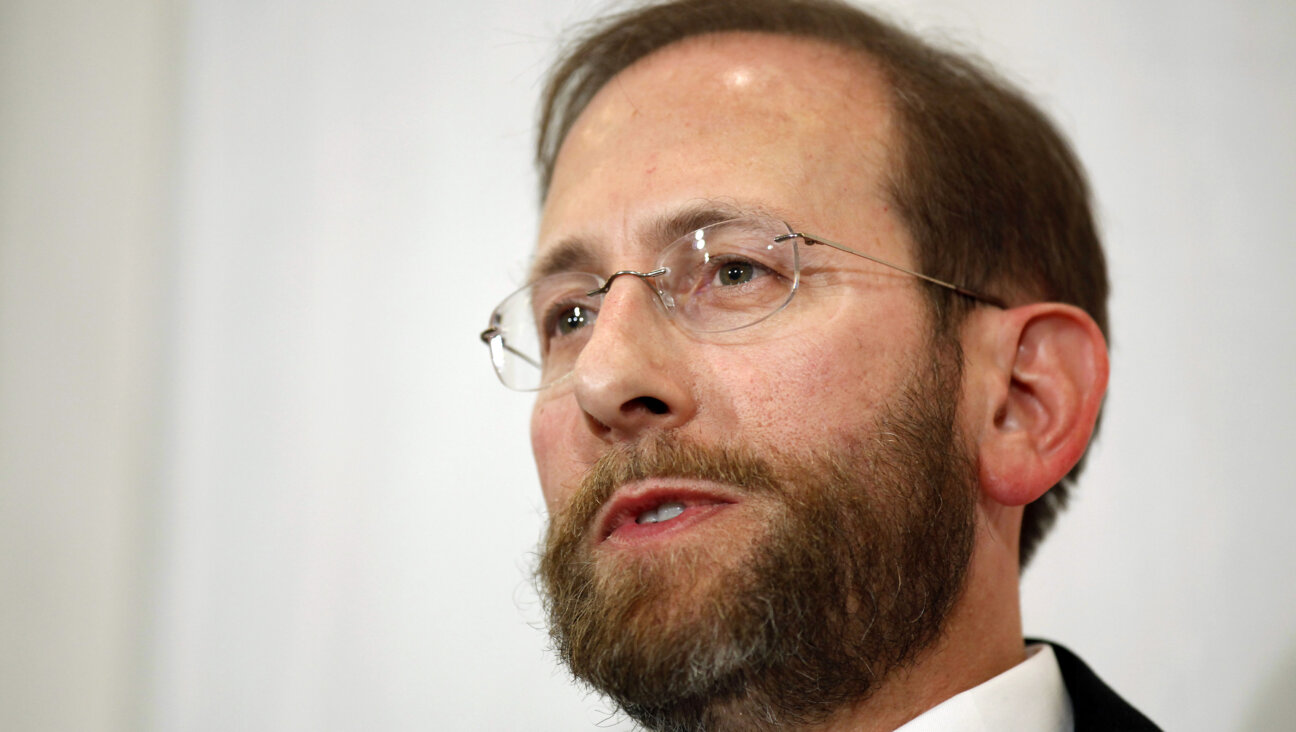Ordaining Gay Men and Women
The portion of Shemini details laws of animal sacrifice and of kashrut. Without a Temple, we no longer bring God animal offerings. As a result of rabbinic interpretation, we now observe many more rules of kashrut than those written in the Torah. Over time, Jewish practice sometimes expands and sometimes contracts. For what reason? One good answer is ethics.
Just two weeks ago, the Jewish Theological Seminary decided to ordain gay men and women as rabbis. It was the culmination of a process that began 35 years ago. When the feminist critique of Jewish law and practice was issued in the early 1970s, it stressed that Halacha, Jewish law, had begun to be perceived by many as a system driven strictly by internal forces, even though historically and talmudically it was driven by outside ones, as well. Jewish law had become more of a science and less of an art. What mattered was precedent and not principle. Beginning with the feminist critique, Jews across the denominational spectrum were forced to confront the deep question: What is the relationship between ethics and Jewish law? The main issue on the agenda back then was whether or not to extend to women the obligations and options that until that time had been reserved for men. Nearly everyone felt that it was the morally right step to take. But Jewish law, many claimed, stood in the way. It did not allow for women to serve as public prayer leaders, as rabbis, as witnesses in a court of law, and so on. Hence, the opponents of change threw their arms up in the air, expressed the pain they felt at the inequity embedded in Jewish law and enacted no change. Others, namely the leaders of the Reform and Reconstructionist movements, decided to extend full equality of opportunity to women and began to admit them to rabbinical and cantorial schools. The Conservative movement, after many debates, decided in 1983 to ordain women as rabbis and found talmudic justification for doing so. Orthodox institutions, to this day, do not admit women to rabbinical training programs. Even so, Orthodox women study Torah much more today than they used to in the past. Attitudes toward women have changed in Orthodox circles. Many girls now celebrate becoming a bat mitzvah by delivering a learned discourse on a topic of their choice.
Looking at these enlightened responses to changes in ethical thinking, we have to ask: On what basis can we continue to discriminate against gay men and women? The Reform and Reconstructionist movements decided that we cannot, and instituted gay ordination more than 10 years ago. The Conservative movement did so just last month. Many say that this issue is harder to deal with than women’s inequality because a Torah verse stands in the way of granting full equality to gay men and one cannot change Torah. Such an argument sounds convincing but does not withstand scrutiny. Its underlying premise is that Torah, which is God-given, cannot change, while Talmud — which is produced by men — can. This is not so. The Judaism we practice today is talmudic, which means that it is based on an extended essay, written by rabbis who lived 1,500-2,000 years ago, on how the Torah tells us to behave as Jews and as human beings. Anyone who studies Talmud extensively will note that the rabbis did not hesitate to alter the simple meaning of the words of the Torah in order to have them accord with their sense of ethical behavior. One clear example is reducing the number of witnesses needed to establish the facts of the case to one from two. This change was instituted for women whose husbands had disappeared but whose death could only be established by one man. The change made it possible for the women to remarry and move on with their lives. The Torah says in no uncertain terms, “al pi shnai edim … yaqum davar,” according to two witnesses, a matter is established (Deuteronomy 19:15). It took audacity, impelled by ethical thinking, for the rabbis to change the number “two” to “one.”
Change is taking place among Orthodox rabbis, as well. Rabbi Chaim Rapoport of Great Britain wrote a volume in 2004 titled “Judaism and Homosexuality, An Authentic Orthodox View,” with a foreword by Rabbi Jonathan Sacks (Valentine Mitchell). In it he acknowledges that the homosexual drive is innate. He pleads for compassion and kindness for gay men and for their acceptance into the community. He encourages them to spend time studying Torah.
There is another argument that Orthodox rabbis can make for the acceptance of gays. Twenty-four years ago, in “Contemporary Halakhic Problems, Volume 2” (Ktav, 1983), Rabbi J. David Bleich wrote an article arguing for changing the status of the deaf. He asserts that the deaf-mute of the Talmud, who was exempted from mitzvot and unable to count in the minyan, is different from the deaf of today. Back then, deaf-mutes could not be educated, could not speak and hence could not display the ability to reason. Circumstances have changed, he writes. The deaf today are fully educable and fully able to display the ability to think and reason. They are not the deaf-mutes of the rabbis. They should therefore be treated like everyone else.
The parallels to the gay conundrum are easy and obvious. If Bleich could change the halachic status of an entire category of individuals in one fell swoop, then we can do the same for gays. The Torah regards sexual relations between men as abhorrent (if we assume, for the moment, that that is the correct interpretation of Leviticus 18:22). But are the gay men of today the individuals whom the Torah had in mind? I don’t think so. There is no reason to conclude that the “homosexual” of the Torah behaves in the same manner as the homosexual today. The Torah seems to be disparaging a particular sexual act between men. It does not know of a monogamous, loving, homosexual relationship between two men (or two women). Just as Bleich turns the deaf-mute of the rabbis into a null set, so am I arguing that the “homosexual” described in the Torah is today a null set. There are, thus, at least two different ways of changing the status of gay men: One is to use the mechanisms for change that were built into Jewish law by the rabbis, its architects; another is to view the words the Torah uses to describe the realities of its own day as no longer accurate in describing the realities of today. Note that this second method comes to us from Orthodox sources.
The larger point in this entire debate is that the past 35 years have witnessed the halachic maturation of the American Jewish community. Every one of its segments, in one way or another, has adapted itself to the realization that women are as fully human as men. Every one of its segments is also rethinking its attitudes toward, and its treatment of, gay men and women. We tend to focus on the issue of the moment. If we look instead at what has happened to Judaism over time, we will find it exhilarating: The American Jewish community has restored the ethical impulse to its halachic deliberations. A cause for celebration.
Rabbi Judith Hauptman is the E. Billi Ivry professor of Talmud and rabbinic culture at the Jewish Theological Seminary and the founder of Ohel Ayalah, a free, walk-in High Holy Days service for young Jews (www.ohelayalah.org).
The Forward is free to read, but it isn’t free to produce

I hope you appreciated this article. Before you go, I’d like to ask you to please support the Forward.
Now more than ever, American Jews need independent news they can trust, with reporting driven by truth, not ideology. We serve you, not any ideological agenda.
At a time when other newsrooms are closing or cutting back, the Forward has removed its paywall and invested additional resources to report on the ground from Israel and around the U.S. on the impact of the war, rising antisemitism and polarized discourse.
This is a great time to support independent Jewish journalism you rely on. Make a gift today!
— Rachel Fishman Feddersen, Publisher and CEO
Support our mission to tell the Jewish story fully and fairly.
Most Popular
- 1

News Student protesters being deported are not ‘martyrs and heroes,’ says former antisemitism envoy
- 2

News Who is Alan Garber, the Jewish Harvard president who stood up to Trump over antisemitism?
- 3

Opinion The dangerous Nazi legend behind Trump’s ruthless grab for power
- 4

Opinion What Jewish university presidents say: Trump is exploiting campus antisemitism, not fighting it
In Case You Missed It
-

Culture This Jewish New Yorker survived the Holocaust and the Hungarian Revolution, and is still helping others today
-

Fast Forward Trump says he and Netanyahu are ‘on the same side of every issue’ following talks on Iran, tariffs
-

Fast Forward California school board members accused of antisemitism during contentious meeting
-

Fast Forward Over 100 Chicago-area rabbis and cantors condemn Trump’s campus crackdown
-
Shop the Forward Store
100% of profits support our journalism
Republish This Story
Please read before republishing
We’re happy to make this story available to republish for free, unless it originated with JTA, Haaretz or another publication (as indicated on the article) and as long as you follow our guidelines.
You must comply with the following:
- Credit the Forward
- Retain our pixel
- Preserve our canonical link in Google search
- Add a noindex tag in Google search
See our full guidelines for more information, and this guide for detail about canonical URLs.
To republish, copy the HTML by clicking on the yellow button to the right; it includes our tracking pixel, all paragraph styles and hyperlinks, the author byline and credit to the Forward. It does not include images; to avoid copyright violations, you must add them manually, following our guidelines. Please email us at [email protected], subject line “republish,” with any questions or to let us know what stories you’re picking up.















